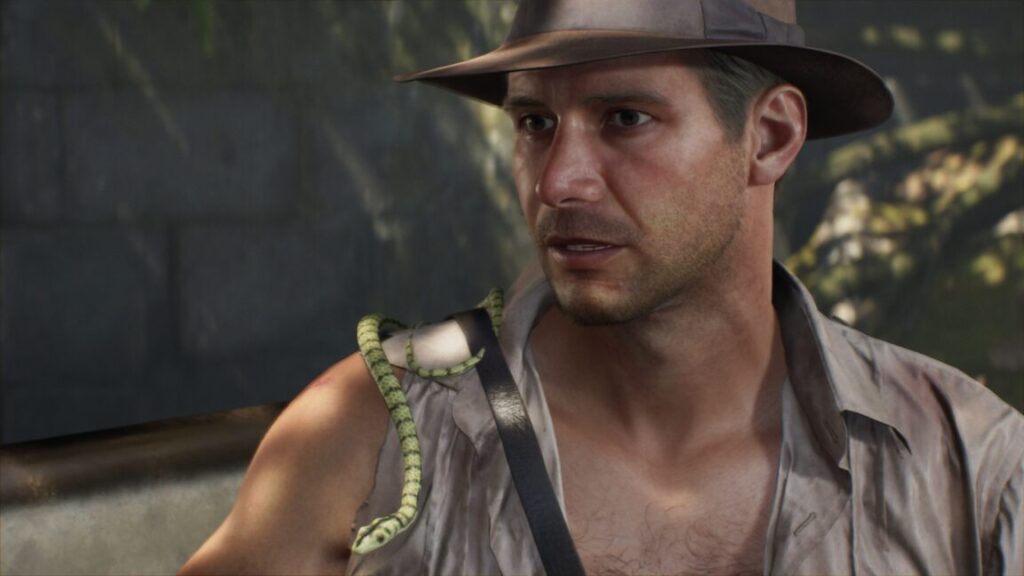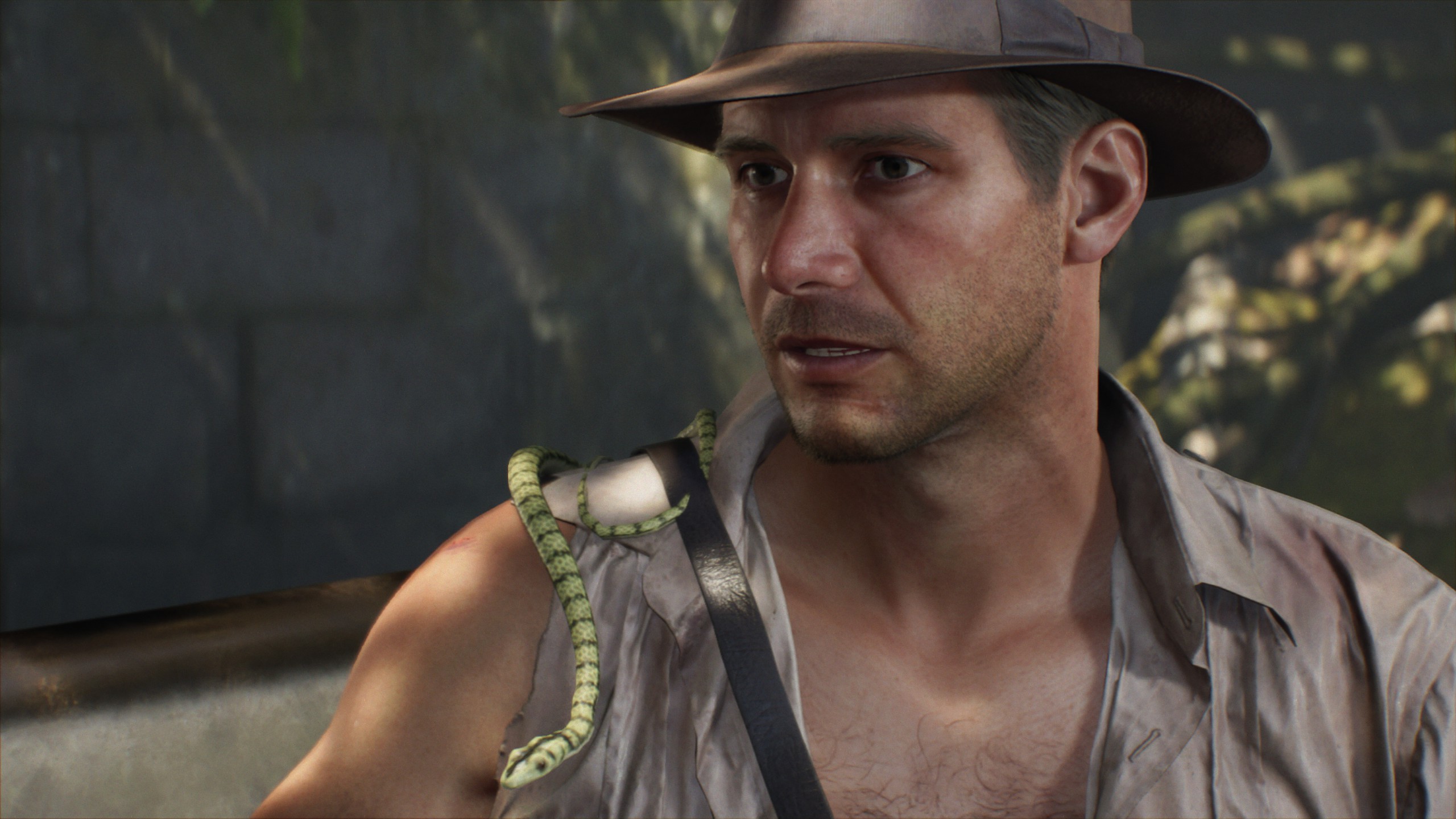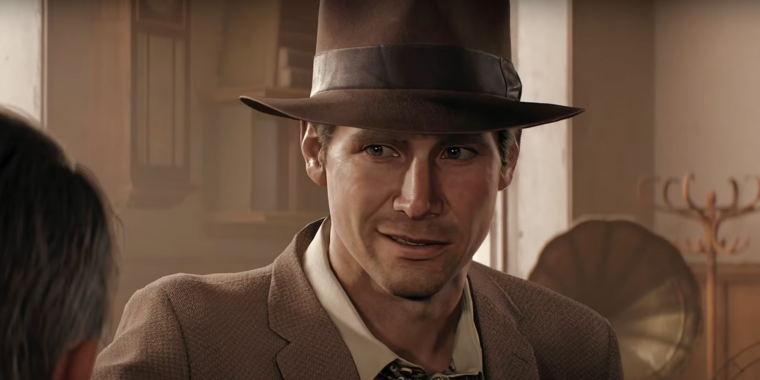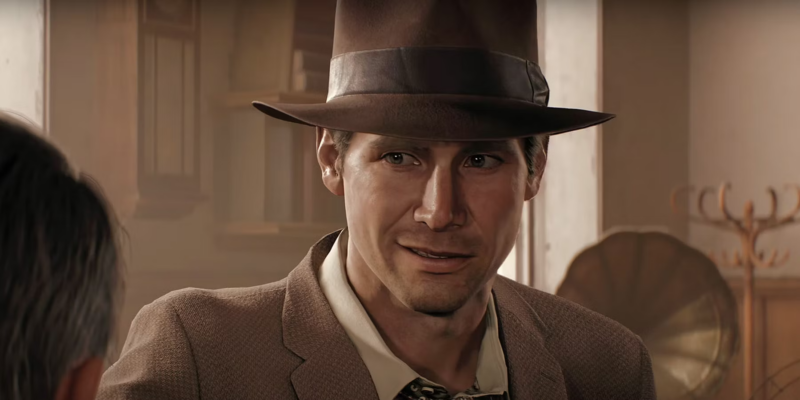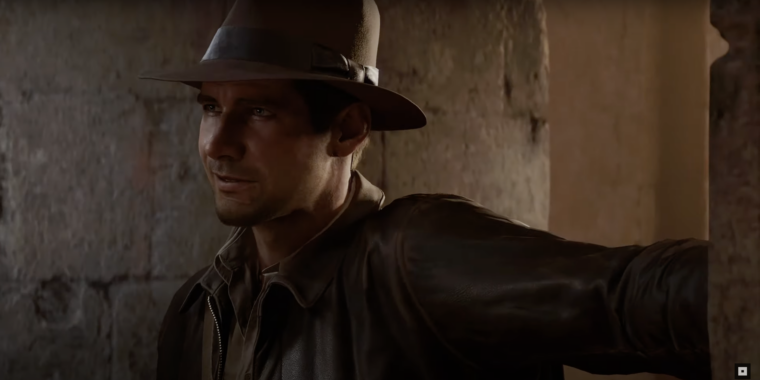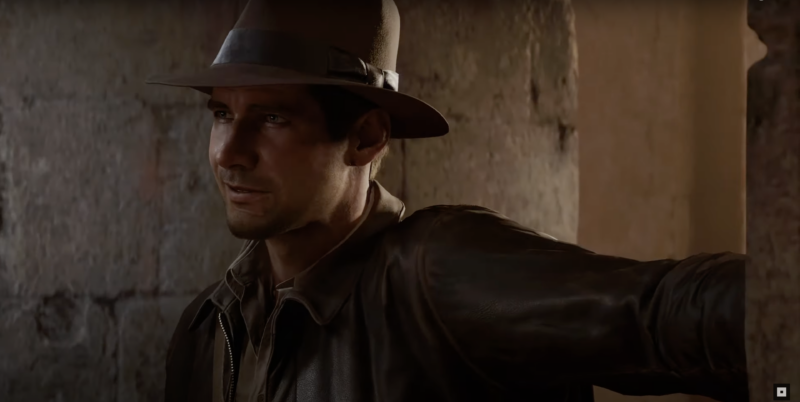Indiana Jones and the Great Circle is pitch-perfect archaeological adventuring
Historically, games based on popular film or TV franchises have generally been seen as cheap cash-ins, slapping familiar characters and settings on a shovelware clone of a popular genre and counting on the license to sell enough copies to devoted fans. Indiana Jones and the Great Circle clearly has grander ambitions than that, putting a AAA budget behind a unique open-world exploration game built around stealth, melee combat, and puzzle solving.
Building such a game on top of such well-loved source material comes with plenty of challenges. The developers at MachineGames need to pay homage to the source material without resorting to the kind of slavish devotion that amounts to a mere retread of a familiar story. At the same time, any new Indy adventure carries with it the weight not just of the character’s many film and TV appearances but also well-remembered games like Indiana Jones and the Fate of Atlantis. Then there are game franchises like Tomb Raider and Uncharted, which have already put their own significant stamps on the Indiana Jones formula of action-packed, devil-may-care treasure-hunting.

No, this is not a scene from a new Uncharted game. Credit: Bethesda / MachineGames
Surprisingly, Indiana Jones and the Great Circle bears all this pressure pretty well. While the stealth-exploration gameplay and simplistic puzzles can feel a bit trite at points, the game’s excellent presentation, top-notch world-building, and fun-filled, campy storyline drive one of Indy’s most memorable adventures since the original movie trilogy.
A fun-filled adventure
The year is 1937, and Indiana Jones has already Raided a Lost Ark but has yet to investigate the Last Crusade. After a short introductory flashback that retells an interactive version of Raiders of the Lost Ark‘s famous golden idol extraction, Professor Jones gets unexpectedly drawn away from preparations for midterms when a giant of a man breaks into Marshall College’s antiquities wing and steals a lone mummified cat.
Investigating that theft takes Jones on a globetrotting tour of locations along “The Great Circle,” a ring of archaeologically significant sites around the world that house ancient artifacts rumored to hold great and mysterious power. Those rumors have attracted the attention of the Nazis (who else would you expect?), dragging Indy into a race to secure the artifacts before they threaten to alter the course of an impending world war.

You see a whip, I see a grappling hook. Credit: Bethesda / MachineGames
The game’s overarching narrative—told mainly through lengthy cut scenes that serve as the most captivating reward for in-game achievements—does a pitch-perfect job of replicating the campy, madcap, fun-filled, adventurous tone Indy is known for. The writing is full of all the pithy one-liners and cheesy puns you could hope for, as well as countless overt and subtle references to Indy movie moments that will be familiar to even casual fans.
Indy here is his usual mix of archaeological superhero and bumbling everyman. One moment, he’s using his whip and some hard-to-believe upper body strength to jump around some quickly crumbling ruins. The next, he’s avoiding death during a madcap fight scene through a combination of sheer dumb luck and overconfident opposition. The next, he’s solving ancient riddles with reams of historical techno-babble and showing a downright supernatural ability to decipher long-dead languages in an instant when the plot demands it.
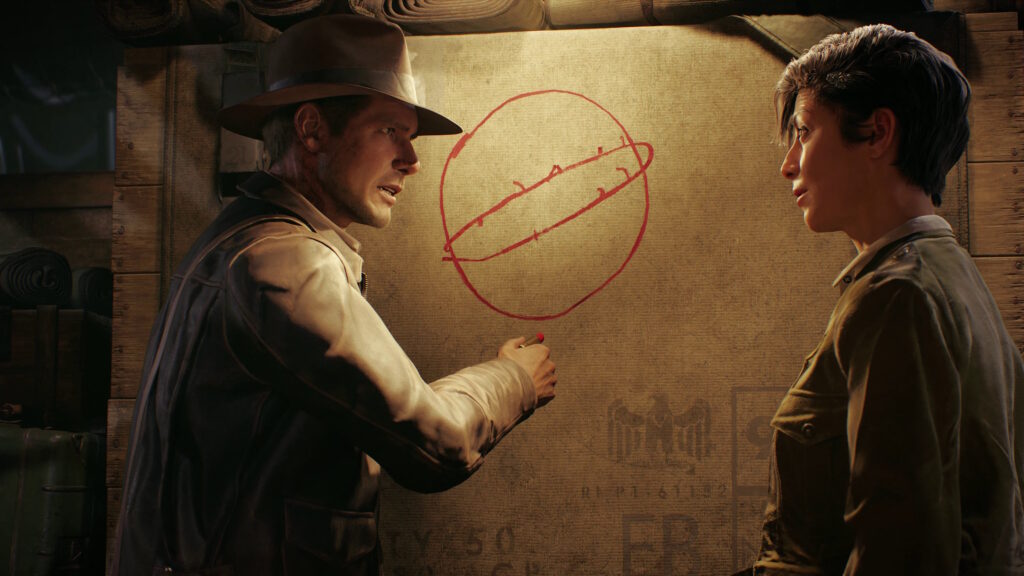
You have to admit it, this circle is pretty great! Credit: Bethesda / MachineGames
It all works in large part thanks to Troy Baker’s excellent vocal performance as Jones, which he somehow pulls off as a compelling cross between Harrison Ford and Jeff Goldblum. The music does some heavy lifting in setting the tone, too; it’s full of downright cinematic stirring horns and tension-packed strings that fade in and out perfectly in sync with the on-screen action. The game even shows some great restraint in its sparing use of the famous Indiana Jones theme, which I ended up humming to myself as I played more often than I actually heard it referenced in the game’s score.
Indy quips well off of Gina, a roving reporter searching for her missing sister who serves as the obligatory love interest/globetrotting exploration partner. But the game’s best scenes all involve Emmerich Voss, the Nazi archaeologist antagonist who makes an absolute meal out of his scenery chewing. From his obsession with cranial shapes to his preening diatribes about the inferiority of American culture, Voss makes the perfect foil for Indy’s no-nonsense, homespun apple pie forthrightness.

Voss steals literally every scene he’s in. Credit: Bethesda / MachineGames
By the time the plot descends into an inevitable mess of pseudo-religious magical mysticism, it’s clear that this is a story that doesn’t take itself too seriously. You may cringe a bit at how over the top it all gets, but you’ll probably be having too much fun to care.
Take a look around
In between the cut scenes—which together could form the basis for a strong Indiana Jones-themed episodic streaming miniseries—there’s an actual interactive game to play here as well. That game primarily plays out across three decently sized maps—one urban, one desert, and one water-logged marsh—that you can explore relatively freely, broken up by shorter, more linear interludes in between.
Following the main story quests in each of these locales generally has you zigzagging across the map through a series of glorified fetch quests. Go to location A to collect some mystical doodad, then return it to unlock some fun exposition and a reason to go to location B. Repeat as necessary.
I say “point A” there, but it’s usually more accurate to say the game points you toward “circle A” on the map. Once you get there, you often have to do a bit of unguided exploring to find the hidden trinket or secret entry point you need.

Am I going in the right direction? Credit: Bethesda / MachineGames
At their best, these exploration bits made me feel more like an archaeological detective than the usual in-game tourist blindly following a waypoint from location to location. At its worst, I spent 15 minutes searching through one of these map circles before finding my in-game partner Gina standing right next to the target I was probably intended to find immediately. So it goes.
Traipsing across the map in this way slowly reveals the sizable scale of the game’s environments, which often extend beyond what’s first apparent on the map to multi-floor buildings and gigantic subterranean caverns. Unlocking and/or figuring out all of the best paths through these labyrinthine locales—which can involve climbing across rooftops or crawling through enemy barracks—is often half the fun.
As you crisscross the map, you also invariably stumble on a seemingly endless array of optional sidequests, mysteries, and “fieldwork,” which you keep track of in a dynamically updated journal. While there’s an attempt at a plot justification for each of these optional fetch quests, the ones I tried ended up being much less compelling than the main plot, which seems to have taken most of the writers’ attention.

Indiana Jones, famous Vatican tourist. Credit: Bethesda / MachineGames
As you explore, a tiny icon in the corner of the screen will also alert you to photo opportunities, which can unlock important bits of lore or context for puzzles. I thoroughly enjoyed these quick excuses to appreciate the game’s well-designed architecture and environments, even as it made Indy feel a bit more like a random tourist than a badass archaeologist hero.
Quick, hide!
Unfortunately, your ability to freely explore The Great Circle‘s environments is often hampered by large groups of roaming Nazi and/or fascist soldiers. Sometimes, you can put on a disguise to walk among them unseen, but even then, certain enemies can pick you out of the crowd, something that was not clear to me until I had already been plucked out of obscurity more than a few times.
When undisguised, you’ll spend a lot of time kneeling and sneaking silently just outside the soldiers’ vision cones or patiently waiting for them to move so you can sneak through a newly safe path. Remaining unseen also lets you silently take out enemies from behind, which includes pushing unsuspected enemy sentries off of ledges in a hilarious move that never, ever gets old.

They’ll never find me up here. Credit: Bethesda / MachineGames
When your sneaking skills fail you amid a large group of enemies, the best and easiest thing to do is immediately run and hide. For the most part, the enemies are incredibly inept in their inevitable pursuit; dodge around a couple of corners and hide in a dark alley and they’ll usually quickly lose track of you. While I appreciated that being spotted wasn’t an instant death sentence, the ease with which I could outsmart these soldiers made the sneaking a lot less tense.
If you get spotted by a group of just one or two enemy soldiers, though, it’s time for some first-person melee combat, which draws heavy inspiration from the developers’ previous work on the early ’00s Chronicles of Riddick games. These fights usually play out like the world’s most overdesigned game of Punch-Out!!—you stand there waiting for a heavily telegraphed punch to come in, at which point you throw up a quick block or dodge and then counter with a series of rapid, crunchy punches of your own. Repeat until the enemy goes down.
You can spice things up a bit here by disarming and/or unbalancing your foes with your whip or by grabbing a wide variety of nearby objects to use as improvised melee weapons. After a while, though, all the fistfights start to feel pretty rote and unmemorable. The first time you hit a Nazi upside the head with a plunger is hilarious. The fifth time is a bit tiresome.

It’s always a good time to punch a Nazi. Credit: Bethesda / MachineGames
While you can also pull out a trusty revolver to simply shoot your foes, the racket the shots make usually leads to so much unwelcome enemy attention that it’s rarely worth the trouble. Aside from a handful of obligatory sections where the game practically forces you into a shooting gallery situation, I found little need to engage in the serviceable but unexciting gun combat.
And while The Great Circle is far from a horror game, there are a few combat moments of genuine terror with foes more formidable than the average grunt. I don’t want to give away too much, but those with fear of underwater creatures, the dark, or confined spaces will find some parts of the game incredibly tense.
Not so puzzling
My favorite gameplay moments in The Great Circle were the extended sections where I didn’t have to worry about stealth or combat and could just focus on exploring massive underground ruins. These feature some of the game’s most interesting traversal challenges, where looking around and figuring out just how to make it to the next objective is engaging on its own terms. There’s little of the Uncharted-style gameplay of practically highlighting every handhold and jump with a flashing red sign.

When giant mechanical gears need placing, you know who to call! Credit: Bethesda / MachineGames
These exploratory bits are broken up by some obligatory puzzles, usually involving Indiana Jones’ trademark of unbelievably intricate ancient stone machinery. Arrange the giant stone gears so the door opens, put the right relic in the right spot, shine a light on some emblems with a few mirrors, and so on. You know the drill if you’ve played any number of similar action-adventure games, and you probably won’t be all that engaged if you know how to perform some basic logic and exploration (though snapping pictures with the in-game camera offers hints for those who get unexpectedly stuck).
But even during the least engaging puzzles or humdrum fights in The Great Circle, I was compelled forward by the promise of some intricate ruin or pithy cut scene quip to come. Like the best Indiana Jones movies, there’s a propulsive force to the game’s most exciting scenes that helps you push past any brief feelings of tedium in between. Here’s hoping we see a lot more of this version of Indiana Jones in the future.
A note on performance
Indiana Jones and the Great Circle has received some recent negative attention for having relatively beefy system requirements, including calling for GPUs that have some form of real-time ray-tracing acceleration. We tested the game on a system with an Nvidia RTX 2080 Ti and an Intel i7-8700K CPU with 32 GB of RAM, which puts it roughly between the “minimum” and “recommended” specs suggested by the publisher.

Trace those rays. Credit: Bethesda / MachineGames
Despite this, we were able to run the game at 1440p resolution and “High” graphical settings at a steady 60 fps throughout. The game did occassionally suffer some heavy frame stuttering when loading new scenes, and far-off background elements had a tendency to noticeably “pop in” when running, but otherwise, we had few complaints about the graphical performance.
Kyle Orland has been the Senior Gaming Editor at Ars Technica since 2012, writing primarily about the business, tech, and culture behind video games. He has journalism and computer science degrees from University of Maryland. He once wrote a whole book about Minesweeper.
Indiana Jones and the Great Circle is pitch-perfect archaeological adventuring Read More »
